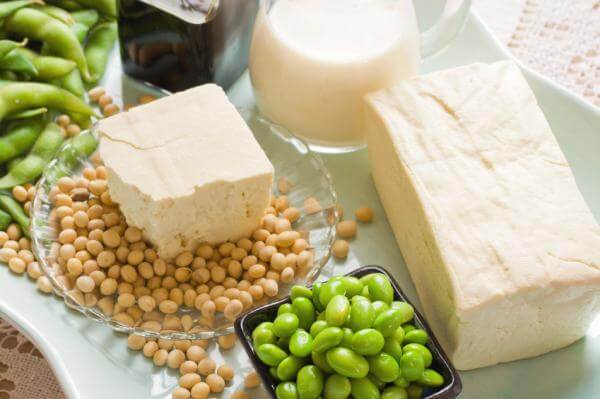Everything You Need to Know About Eating Soy During Pregnancy
Whether you’re at week 10 or quite a bit further along in your pregnancy, you’re probably looking for ways to eat better without adding too many calories to your diet.
Perhaps you are sensitive to dairy products and are seeking alternatives, or perhaps you’re already a fan of soymilk, tofu, tempeh, and other soy-based products. Whatever your reasons for seeing information about eating soy during pregnancy, you’ll find answers here.
Table of Contents
What is Soy?
Soybeans have been a human food source for thousands of years; they were domesticated in China around 1100 BCE.
Like peas and other types of beans, they are legumes, with seeds that grow in pods. Today, soy is recognized as a good source of lean plant-based protein.
It is highly versatile, with the ability to complement a variety of flavors. Many soy products are fortified with calcium, vitamin D, omega-3 fatty acids, and other essential nutrients.
Read: Properties of Jerusalem artichoke
Understand Misconceptions and Where They Come From
Run a quick internet search for soy safety during pregnancy and you’ll come across many opinions. Dig a bit deeper, and you’ll discover that many of the studies decrying soy as harmful are small, animal-based ones that have not been replicated or proven in human studies.
This is particularly important since our human metabolism is different than that of animal subjects, and because numerous studies comparing soy-heavy Asian diets with typical western diets prove that the Asian diets are generally healthier.
Medical authorities including the University of Maryland Medical Center agree that soy is safe during pregnancy and breastfeeding. Organic, non-GMO soy products are probably best, and experts typically agree that fermented products are superior to non-fermented ones.
If you take some time to take a closer look at myths and misconceptions surrounding soy safety, you’ll discover that much of the skewed data comes from studies conducted by anti-soy meat and dairy lobbies such as the Weston A. Price Foundation (WAPF) out of concern for profit.
Oddly enough, most of the genetically modified soybeans grown in the United States are consumed by animals intended for slaughter or milk production, and much goes into processed foods. It’s quite likely that you are already getting some soy in your diet.
Benefits of Soy
Not only is soy an outstanding source of plant-based protein, it has been associated with lower breast cancer rates. People who eat soy as a regular part of their diet tend to have a reduced risk of heart disease, stroke, high blood pressure, and hormone-dependent cancer.
Additionally, diabetes risk is lower, and people who consume more soy tend to have lower rates of obesity. It’s important to note that soy makes a difference when it is consumed as part of a diet that is healthier overall, and that it takes time for dietary benefits to accumulate.
As with other foods, less-processed soy offers more benefits than heavily processed items like soy protein powder and soy isolate or soy protein concentrate.
Ways to Enjoy Soy
Now that you know that soy can be safe during pregnancy, how best to enjoy it? Mayo Clinic recommends snacking on soy “nuts” for their iron and B vitamins, and encourages drinking calcium-fortified soy milk.
It’s great on cereal and in recipes, where it can easily stand in for dairy milk. It is fantastic for making decaffeinated chai tea lattes; you’ll get lots of foam and the taste is both delicate and pleasant.
Tofu, which seems rubbery and bland in its plain, packaged form, becomes chewy and delicious when excess moisture is pressed out, and when it is marinated or added to saucy dishes where it quickly absorbs appealing flavor.
Tempeh has a stronger taste, and is equally versatile. Textured vegetable protein (TVP) is a fat-free, protein-rich stand-in for hamburger in casseroles, spaghetti sauces, chili, and more.
If you’re looking for an outstanding source of whole-food plant based protein, then consider enjoying edamame now and then. These green soybeans are steamed, lightly salted, and enjoyed straight from their pods, making for a very satisfying snack.
You don’t have to be vegetarian or vegan to appreciate soy; in fact, many people have it a few times a week because they want to cut back on meat and benefit from soy’s low-calorie nutrients.
So go ahead! Enjoy a varied diet that focuses on vegetables, fruits, whole grains, and lean proteins – including soy if you like it.
